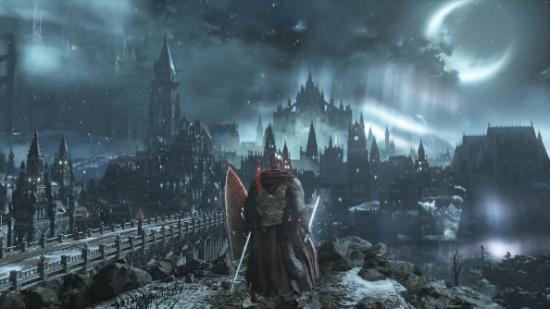With trembling, sweaty hands I grip the controller like a lifeline. He’s a Dark Souls III boss with a bad attitude and a sliver of health. I’m an armour-clad knight with a sweet sword and a sliver of health. We’re dancing, postponing the inevitable – one of us is going to die. We’ve done this several times already, and the death has always been mine. But this time… this time it’s close.
He makes his move, and a multiverse of options opens up. In one universe, I dodge backward, but it’s not enough and I’m crushed. You Died. In another, I try to hit him before he hits me, but he’s a split second quicker. You Died. A different me just runs away, out of reach, and the dance continues. But in this universe, I roll to the left, avoid his attack and charge, piercing him with my ice-covered blade.
A big victory in Dark Souls III elicits the sort of reaction from me that I’d be frankly embarrassed to reveal to people that don’t orbit the realm of videogames. As the boss goes down, I just stare at the screen for a second, not quite believing I made it. Then, all of this bottled up emotion, this maelstrom, shoved down before to allow me to focus, it explodes. I find myself sitting on the ground just laughing. Elated. Exhausted.
During my odyssey through the monstrous, cadaver-filled land of Lothric, I’ve experienced far fewer moments like these than I have ones where I’m tired, second-guessing, self-deprecating and extremely stressed. Like its predecessors, from Demon’s Souls to Bloodborne, Dark Souls III is not a pleasant game. It can be frustrating, obtuse, and sometimes even downright cruel.
It’s wonderful.
I’ve been built up and torn down more times than I can count. I’m a hot mess, right now. But it has all been worth it, because Dark Souls III is a deviously clever, fascinating game crafted with a singular level of artistry. It’s a Best Of, a Greatest Hits, taking the finest bits from not just the Dark Souls series but its progenitor and PS4 spin-off and seamlessly merging them into a new world.
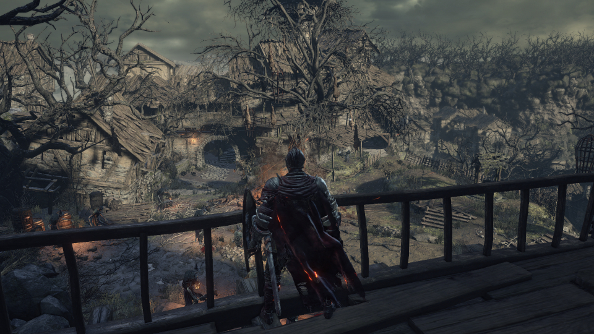
Within this mutant you’ll find the flexibility introduced in Dark Souls II, like every bonfire connecting to the fast travel network; the the need for more aggression of Bloodborne; and the ingenious level design and out-of-this-world boss battles of the original Dark Souls.
Take a look at our Dark Souls 3 PC port review to see if this is the version to get.
The familiar: a mostly dead world, inhabited by the occasional eccentric NPC and countless monsters that respawn every time you die. A world filled with bosses and traps and labyrinths, where surviving means learning how to fight like a champ, mastering and perfectly timing dodges, back steps, parrys, blocks and attacks. And of course, there’s all the dying. Over and over again, resurrecting at the last lit bonfire.
The broad strokes, from the incredibly vague plot – you’re trying to defeat the Lords of Cinder to kickstart the world’s renewal – exposed via equally vague conversations, item descriptions and environmental storytelling, to the acquisition of souls that are used as both currency and experience, are shared across most of the games, and continue to be here.
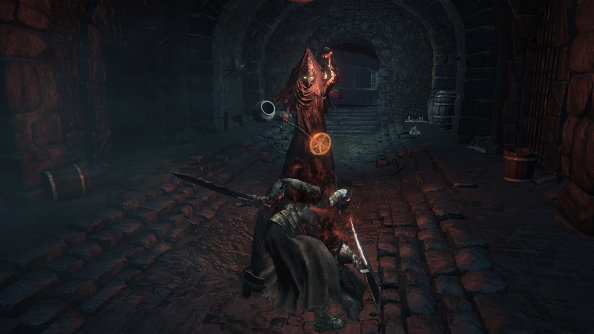
It’s now a formula that From Software know very well, and what’s been retained from the earlier games has been deftly reconstructed. That serves as a very solid foundation upon with Miyazaki and co have constructed new systems and reimagined old ones. There’s a lot to learn, then, and you’ll have to learn on the job. And given that Dark Souls III keeps up the series’ infamous obtuseness, it asks a lot of its players.
Options are something Dark Souls III offers in spades, but with every new option, there’s an additional layer of complexity. Take the new weapon skills, for instance. These attacks call to mind the weapon transformations introduced in Bloodborne. By switching to the power stance, either dual-wielding or holding the weapon with both hands, your weapon develops new abilities. The longsword, for example, allows you to move into a readied stance, from which you can launch a guard break attack, or you can charge up a devastating rush attack. A greatsword, on the other hand, lets you unleash a spinning onslaught, turning you into a death-dealing tornado.
These weapon skills are handy additions, and each sword, axe, whip and so on are rich with attack options. But in the heat of battle, it can be easy to forget about these abilities entirely, and using them isn’t free either. Dark Souls III introduces a mana bar – From Software calls it FP, but I’ll keep calling it mana because I’m stubborn – and this doesn’t just affect spellcasters, who are now no longer restricted to a specific number of spell uses. Every class uses mana, because it’s the resource that’s gobbled up by weapon skills.
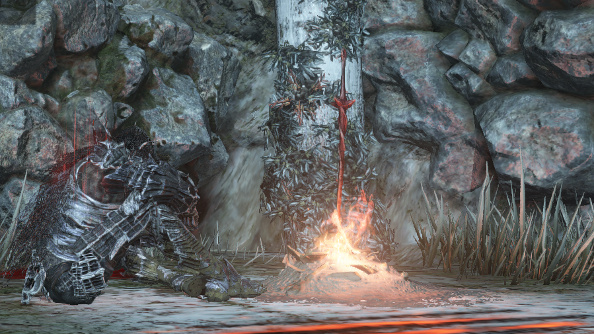
Since mana is now a thing, the Estus flask has changed as well. Previously the flask was just used for healing, but now there’s a second one, the Ashen Estus flask, which refills your mana. But these flasks are connected, and as you discover shards that let you gulp down your elixer more often, you must decide how to allocate them, as the uses are shared between both of them. If you’ve got eight uses, you can allocate four for healing and four for mana, or you can just ignore one or the other and put all of them in one flask. Again, options and choices.
For my big burly Knight, I decided that mana was not a big deal. It can be recharged at bonfires anyway, and I was rarely running out before I hit the next one. So I poured all of my charges into my regular Estus flask. This is a bit of a double-edged blade.
On the one hand, it reduces some of the tension that’s an integral part of the game, because after only 12 hours I had so many Estus charges that I rarely found myself worried about healing. Yet I also found that it made me bolder. With my flask overflowing with life-giving juice, I felt more able to take risks and explore, jumping off ledges in search of shortcuts and secrets. And as someone who spent most of the last two Dark Souls games cowering behind a shield, it was a pleasant change of pace, being encouraged to be more aggressive, leaping into the fray with greater frequency.
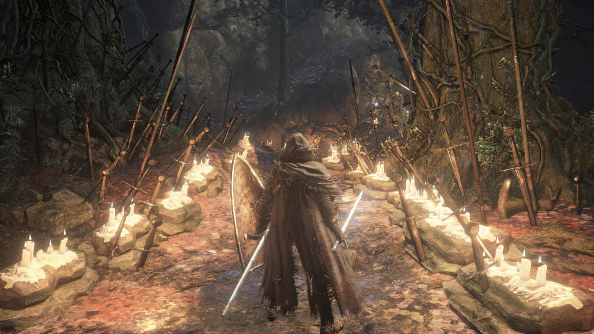
These new systems, however, along with the Embers that replace Humanity and Human effigies and allow you to become a host for multiplayer shenanigans, are poorly explained. It’s an issue that the series has always had, as From Software attempt to teach people how to play a game that is so against hand-holding. I shudder to think how clueless new players will be, without the benefit of experience from the previous games.
That’s not to say that Dark Souls III isn’t good at teaching players other things. It might not express how the actual systems work particularly well, but it educates players on how to survive in subtle and effective ways.
In the first main area, the High Wall of Lothric, a gorgeous but ruined fortress filled with moaning undead and stalwart, monstrous knights, there’s a surprise awaiting adventurers that teaches, in a single encounter, so many important skills and tactics. Littered throughout the area are prostrated undead worshipers, seemingly happy to let you slice and dice them while they pray. But in some of these groups you’ll find a rather special walking corpse who, upon being interrupted while worshiping, stands up and quickly transforms into a disgusting mass of throbbing corruption. In this form, at this stage of the game, he is extremely hard to kill.
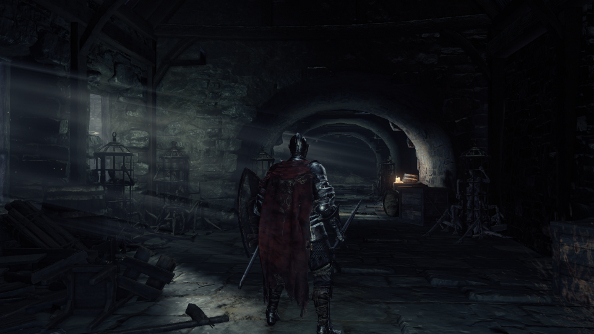
From this encounter, you can learn a lot about how you should proceed throughout the rest of the game. It teaches that fleeing from a powerful enemy is nothing to be ashamed of, and that deadly, overpowered foes can crop up anywhere. It reminds you that nothing is what it seems, and that enemies have just as many tricks up their sleeves as you do. But this creature is not unkillable, and its appearance is also like a challenge, the game trying to see if it can push you into a confrontation with something that will kill you in a couple of hits. Dark Souls III provides you with everything you need to be victorious, to learn how to play, but it’s never your friend.
Worldbuilding is approached in a similar fashion, where showing is favoured over telling, and where everything is vague and enigmatic. You can learn a lot from brief conversations, the sprawling areas and the horrifying enemies, however, but nothing is ever particularly clear or overt. You’re an adventurer, but you’re also an archaeologist, unearthing history and uncovering mysteries by digging through the world.
And what a world it is. Lothric is the most beautiful kingdom that From Software has crafted, and it’s a land that’s a lot more cohesive than Dark Souls II’s. Locations feel more connected – through lore, but also visually. Even after you’ve travelled for hours upon hours, you can often turn around and see the magnificent castle that you first slaughtered your way through, lording it over the rest of the world, even if you’re now slumming it in a swamp or being blinded by a twinkling, ice-covered city.
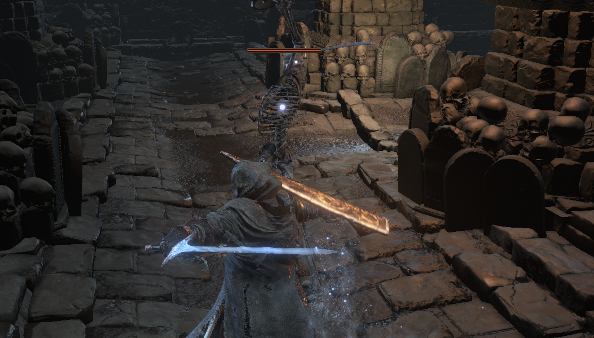
Cohesive doesn’t mean linear, though. There’s a main path that you’re sort of following, sure, but there are a multitude of diversions, shortcuts, secrets and entire areas and optional bosses that will be very easy to miss unless you’re willing to go off the beaten track and do some exploring.
Given the post-apocalyptic themes, it’s a surprisingly bright and stunning place. Despite the name, it’s rarely literally dark. But it’s still haunting. It’s lonely – aside from the ghosts of other players – and even the most gorgeous of areas are made unsettling by the alien horrors contained within.
There are plenty of callbacks to the previous games, too, from NPCs to items to the locations themselves. Firelink Shrine, the main hub, is named after Dark Souls’ hub, and it looks a lot like Demon’s Souls’ Nexus, and there are even foes and areas that could easily have been lifted right out of Bloodborne. Despite this, Lothric never feels like a poorly-stitched patchwork world, but it is undeniably familiar. That familiarity does, admittedly, take away some of the magic. It never feels completely new, not in the way that Bloodborne did, or the original Dark Souls.
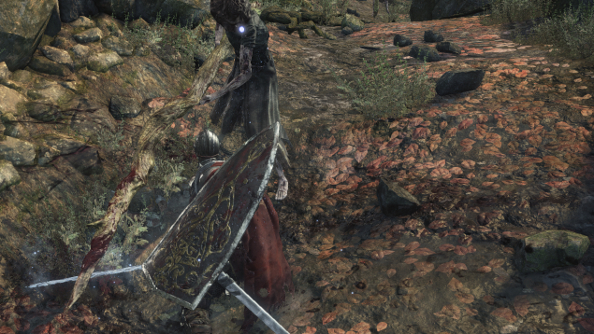
For some, the most important aspect of the series will always be the challenge of the encounters. So! Just how difficult is Dark Souls III? Very, not surprisingly. But how it offers these challenges is unusual. It’s all rather inconsistent. I confess that I’m quite terrible, not just at this third game, but at all of them. I adore them, so I keep at it until I’ve worn my fingers down to the bone, but it’s always a struggle. Thus I was surprised to find that Dark Souls III was, to begin with, comparatively easy. Until it wasn’t. And then it was again. And then it was the hardest of the lot.
There are bosses that I’ve taken down with greater ease than some of the regular enemies, and others that I’ve genuinely had to spend days on. Days. For just a single encounter. That probably sounds like a terrible nightmare to some of you, and there were certainly points where it felt that way too. But aside from a couple of boss battles that I got through just due to luck and the law of averages, most of my victories happened after an epiphany. One slight change in strategy, one improved ability, a new shield, and suddenly a battle that cost me five hours becomes a doddle.
Sometimes, the source of that internal realisation was the game itself, nudging me in the right direction. I recall one boss battle that was giving me a lot of trouble and at least 20 new grey hairs. I was slamming into an impenetrable wall, over and over again. On my tenth trip back to him after dying yet again, I took a little detour to blow off some steam, and then an enemy dropped part of an armour set that I suddenly realised was exactly what I needed. After killing a few more of them, I was able to return to my nemesis and finally dispatch him.
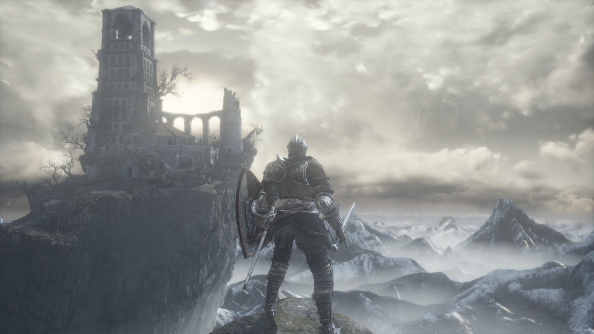
It’s inconsistent, though. Dark Souls III isn’t a game that gets progressively harder, rather it has spikes and troughs. It can be maddening, but also means that there are moments of respite where you feel like you can tackle anything, and that’s lovely, until you are stripped down again and made to feel like shit.
I won’t go into too many specifics, because the bosses and enemies are best discovered and experienced without a verbose man on the internet ruining them for you, but rest assured that there are many devilishly clever and dastardly monsters populating Lothric, benefiting greatly from Miyazaki’s return to the series. The monster design in Dark Souls III is simply amazing at times, both visually and mechanically, and it never tires at throwing new beasties that you’ll want to curse for all eternity at you with every turn you make. If I could get my hands on a grimoire or bestiary full of these horrible creatures, it would not doubt become one of my most treasured possessions.
NPC allies and summoned players should make confrontations with bosses easier, but in the review version of the game I only spotted a couple of summon signs for NPCs, and none at all for other players, though this will undoubtedly change once the masses converge on Lothric when Dark Souls III launches on April 12.
There are moments, lamentably, when the game’s precarious balance is lost, and it dips into the realms of simply being cruel and unfair. It’s a series known for being devastatingly tricky, but when you die it’s meant to be your fault: you made a mistake, you need to learn the enemy patterns or get better gear, or you simply need to be better. And that’s mostly the case in Dark Souls III, but in From Software’s desire to provide new challenges, the game sometimes becomes cheap.
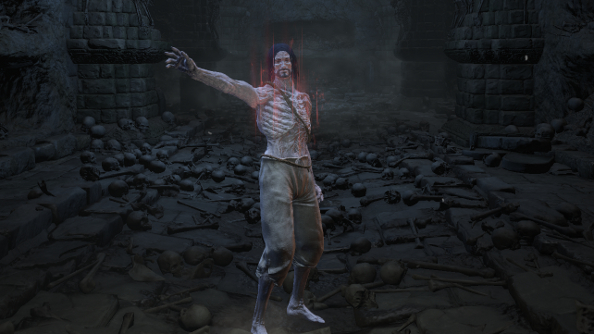
Attacks that lead to instant death are the worst of the lot, and they aren’t entirely uncommon, to the point that some bosses have more than one. And there are encounters that can kill you by doing something that the game has trained you to believe can’t happen, like how hiding behind an obstacle will stop a projectile from hitting you, until you get into a fight where suddenly it can. Thankfully, once you experience these cheap attacks, you’ll learn how to avoid them, but it doesn’t stop them from feeling unreasonable.
Frustration is part and parcel of the experience, of course. And it only makes those precious victories all the more satisfying. I have no doubt that people will argue for years about where Dark Souls III sits in the series, if it’s better than Dark Souls II, worse than Bloodborne, on par with Demon’s Souls, but none of that’s important. What is, is the game’s power to make you feel like you’ve actually earned every reward, every successful battle.
You start off as a weak, undead wanderer and eventually grow into a being that can kill god-like monsters, and it’s not because the game’s narrative needs you to be that powerful, but because you’ve worked so very hard to get to that point. It’s an incredible feeling, and makes Dark Souls III an incredible game.
